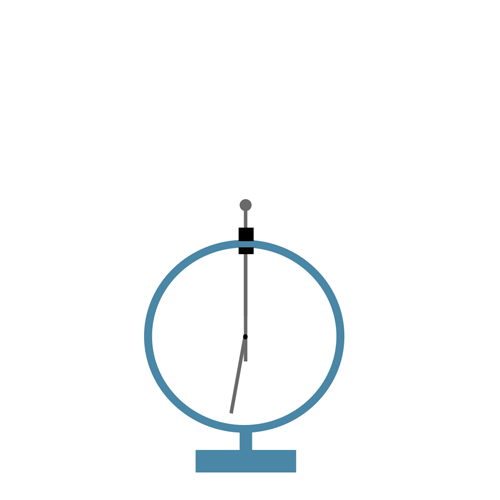Equipment
- Electroscope
- Proof ball
- Separable Cylinder Conductor
- Tripod stand
- Conductor holder
- Plexiglass rod
- Silk cloth

Demo
Conduction is the process through which a neutral object becomes charged after contact with a separate, charged object. This demo uses conduction to charge an electroscope with a proof ball and separable cylinder conductor.
The plexiglass rod may be charged by rubbing it with the silk cloth for several seconds. The conductor is then charged by touching the plexiglass rod to the outside of the conductor. The proof ball and electroscope may be charged in the same manner.
You may test the charge on the proof ball and conductor by bringing them near a neutral electroscope (thus charging the electroscope through induction). The gold leaf (needle) will deflect slightly. Alternatively, you may touch the items to the top of the electroscope to charge it via conduction and the gold leaf (needle) will hold its position.
Explanation
The plexiglass rod gives up electrons when rubbed with the silk cloth, leaving it positively charged. When the rod touches the conductor, electrons are transferred from the conductor to the plexiglass rod which neutralizes the rod, but leaves the conductor positively charged. The spark sound indicates the transfer of electrons; when more sparks are heard, there is a higher charge on the conductor.
Notes
- Make sure you are grounded; this demo does not work well with rubber soled shoes that insulate you from ground.
- Make sure the conductor touches several portions of the plexiglass rod to maximize the chance of electron transfer.
- This demo may be used with other rod/cloth combinations.
Written by Madison Harris